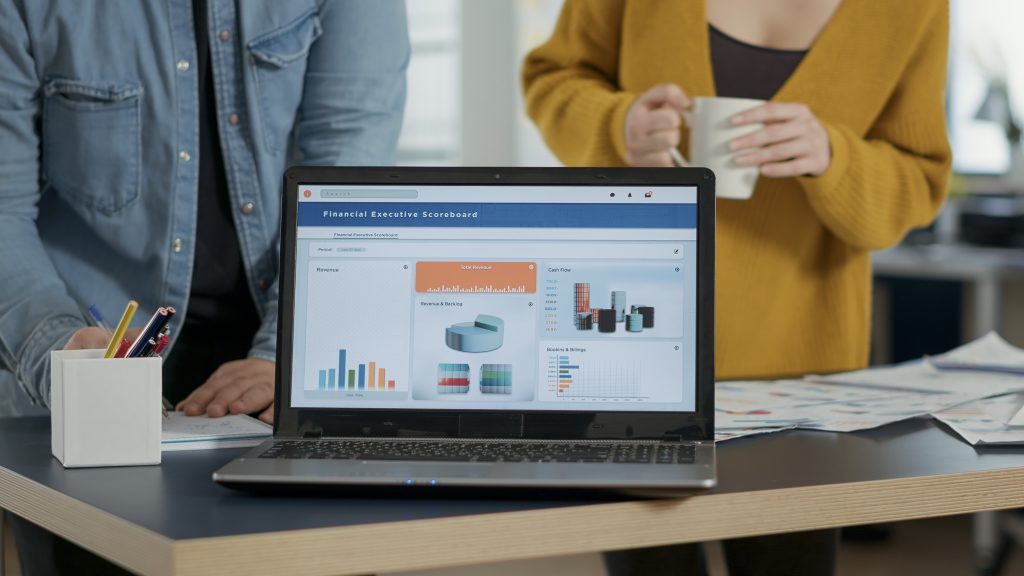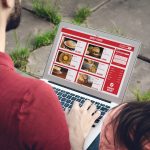In today’s competitive restaurant industry, marketing is no longer optional. It’s essential.
Whether you run a food truck in Orlando or a fine dining restaurant in Miami, the tools you use can help you attract more customers, build your brand, and increase revenue.
But with so many platforms, apps, and marketing tactics out there, how do you know what’s actually useful?
Should you try to manage everything yourself, or focus on running your restaurant and bring in expert support?
This guide is designed to help you decide.
We’ve organized the most effective restaurant marketing tools into clear categories. For each one, we include:
- What it’s used for
- Skill level required
- Whether it’s suitable for DIY or better with professional help
This way, you can choose what fits your goals, your resources, and your time.
How to Choose the Right Marketing Tools for Your Restaurant
Having tools is not enough. Just like a well-equipped kitchen still needs a great chef, your marketing tools need time, skill, and strategy behind them.
Some tools are perfect for quick wins and day-to-day execution. Others require planning, consistency, and a deeper understanding of digital marketing.
Use this guide to explore tools across the following categories:
- Website and SEO
- Social Media and Content Creation
- Online Reviews and Reputation
- Email and SMS Marketing
- Loyalty Programs and CRM
- QR Menus and Online Ordering
- Analytics and Tracking
- AI and Automation Tools
For each tool group, we’ll show you how it works, what it takes to use it well, and what results you can expect.
1. Website and SEO Tools
A strong online presence starts with your website. Most potential customers will check you out online before ever walking through your door. If your site is hard to find or doesn’t inspire trust, they may never make it in.
Your website is your digital storefront, and SEO (Search Engine Optimization) is what makes it visible to people searching for places to eat.

What they’re used for
- Building and managing your website
- Showing up in Google when someone searches for restaurants in your area
- Creating a strong first impression with visuals, menus, and reviews
- Tracking how people find your site and what they do once they land
Why SEO matters
SEO is what helps your restaurant show up when someone types “best tacos in Tampa” or “pizza near me” into Google. It’s the difference between being buried on page 3 and being one of the first results people click on.
Good SEO starts with:
- A fast, mobile-friendly website
- Keywords that match how people search
- Optimized images, page titles, and descriptions
- A complete and updated Google Business Profile
- Consistent listings across the web (address, phone, hours, etc.)
Unlike paid ads, SEO brings free, ongoing traffic — but it takes time and the right foundation.
Popular Tools
- Google Business Profile: Free and essential for local search
- WordPress: Highly customizable, scalable, and SEO-friendly
- Wix / Squarespace: Easier to set up, but limited in long-term SEO performance
- Yoast SEO / RankMath: SEO plugins to manage content structure and meta data
- Google Analytics 4: Tracks how people find and use your website
- BrightLocal / Moz Local: Manage and monitor your business listings across platforms
WordPress vs Wix/Squarespace
If you’re serious about ranking in Google over time, WordPress is the best long-term option.
It gives you complete control over your content, speed, SEO structure, and integrations.
Platforms like Wix and Squarespace are faster to set up, but they’re less flexible and often more difficult to scale. For restaurants planning to grow or invest in ongoing SEO, these platforms can become limiting.
Skill Level Required
Intermediate.
Expect to learn the basics of page structure, keywords, load speed, and how to update your site regularly. You may also need a web developer or SEO expert for setup and optimization.
DIY or Done-for-You?
You can build a basic site yourself using a template, but most restaurant websites benefit from professional setup, especially if local SEO is a priority.
If your goal is long-term visibility and ranking on Google, it’s worth getting help to set it up right from the start.
2. Social Media and Content Creation Tools
Social media is one of the most effective ways to connect with your local community, promote your brand, and drive real traffic to your restaurant. Platforms like Instagram, Facebook, and TikTok have become essential spaces for restaurants to showcase their food, their people, and the experience they offer.

What makes social media powerful is consistency. Posting once a month is not enough to stay relevant. The right tools help you plan content, stay organized, and create visuals that actually get attention.
What they’re used for:
- Planning and scheduling content in advance
- Designing graphics, videos, and story templates
- Managing engagement with customers
- Building a content calendar around promotions, events, and holidays
Popular tools:
- Meta Business Suite: Built-in tool for managing Facebook and Instagram posts, ads, and comments
- Hootsuite and Later: Platforms for scheduling posts across multiple networks and tracking performance
- Canva and Adobe Express: Design tools for creating menus, stories, ads, and branded visuals
- Descript and CapCut: Video editing platforms that make it easy to create behind-the-scenes content, reels, and short-form video
- Notion or Google Sheets: For planning your content calendar, caption ideas, and hashtags
Skill level required:
Beginner to intermediate. You don’t need to be a designer, but you do need a good eye for branding and the ability to stay consistent with your posting. Video content adds complexity but tends to perform best.
DIY or done-for-you:
Social media can be managed internally if you or someone on your team has the time and creativity. However, many restaurants struggle to post consistently or develop a clear visual identity. In those cases, working with a marketing team can ensure your brand stays active and engaging, while you focus on running the business.
Posting high-quality content a few times a week, with a consistent voice and style, is often more effective than posting daily with no strategy.
3. Online Reviews and Reputation Management Tools
Before most customers visit a restaurant, they check reviews. In fact, over 90% of diners read online reviews before deciding where to eat. This makes reputation management one of the most important parts of your marketing strategy.
Good reviews attract new customers. Ignored or negative reviews can drive them away. The right tools help you monitor, respond, and improve your overall online image — without spending hours doing it manually.

What they’re used for:
- Tracking and responding to customer reviews
- Improving your average rating across platforms like Google, Yelp, and TripAdvisor
- Encouraging happy customers to leave feedback
- Managing multiple review sites from one place
Popular tools:
- Google Business Profile and Yelp for Business: Must-have platforms for listing and review management
- Birdeye / Podium / Chatmeter: Platforms that centralize reviews and automate response workflows
- Trustpilot or Facebook Reviews: Additional sources of social proof for your website
- QR-based feedback requests: Tools that let diners leave a review via a scan at the table or after payment
Skill level required:
Beginner. Most review platforms are easy to use, but it takes consistency and the right tone to respond effectively and build trust.
DIY or done-for-you:
You can manage reviews on your own if you have the time to check regularly and respond quickly. However, if you are short on time or receive high volume, tools like Podium or Birdeye can help automate the process.
Tip: Don’t ignore reviews — even the bad ones. A well-written reply can turn a negative experience into a second chance and shows other customers that you care.
4. Email and SMS Marketing Tools
While social media helps attract new customers, email and SMS marketing are two of the best ways to bring people back. These channels let you reach customers directly with offers, events, and updates — without relying on algorithms or paid ads.
Both email and SMS are highly effective when used with the right timing and message. A well-timed promo, event reminder, or loyalty reward can turn an occasional visitor into a regular.

What they’re used for:
- Sending promotions, event invitations, and loyalty rewards
- Creating automated welcome messages, birthday offers, or follow-up emails
- Segmenting your list by location, order history, or visit frequency
- Scheduling messages for holidays, slow nights, or new menu launches
Popular tools:
- Mailchimp: Easy to use and great for beginners, with automation and list management features
- Sendinblue / SendPulse / GetResponse: All-in-one platforms with SMS, email, and automation
- Klaviyo: More advanced and ideal for restaurants with online ordering and eCommerce needs
- SlickText / Twilio: SMS-focused platforms for short messages, promo codes, or alerts
- Toast / Square Loyalty integrations: Combine POS data with automated email or text campaigns
Skill level required:
Beginner to intermediate. Most platforms offer templates and automation flows, but you’ll need to create content that fits your brand and goals.
DIY or done-for-you:
You can absolutely start small and manage this yourself using free or low-cost tools. As your list grows and campaigns get more complex, it may be worth getting help to segment your audience, write better messages, and analyze what’s working.
Email and SMS are powerful because they talk directly to people who already like your restaurant. You just need the right message at the right time.
5. Loyalty Programs and CRM Tools
Getting a new customer is great, but turning that customer into a regular is even better. Loyalty programs and customer relationship management (CRM) tools help restaurants build long-term relationships that increase revenue over time.
These tools let you reward repeat visits, track customer behavior, and personalize your marketing — without needing to remember who ordered what.

What they’re used for:
- Tracking customer visits and purchases
- Offering points, rewards, or discounts to loyal guests
- Sending personalized promotions based on order history
- Collecting emails and phone numbers for future campaigns
- Organizing customer data across locations or channels
Popular tools:
- Square Loyalty / Toast Loyalty: Easy to set up and integrate with your POS system
- Thanx: Built for restaurants and retail, with real-time customer insights
- FiveStars / Belly: Digital loyalty platforms with app-based punch cards
- HubSpot CRM / Zoho CRM: More advanced tools for restaurants with high customer volume or catering services
- Zapier integrations: Automate workflows between POS, email, and loyalty systems
Skill level required:
Beginner to intermediate. Most loyalty platforms are user-friendly, but CRMs may require setup help if you want advanced automation or reporting.
DIY or done-for-you:
Many restaurants start with simple punch card apps or POS-integrated loyalty tools. If you want to scale personalization and track lifetime value, working with a marketing team can help you set up smarter campaigns and automate follow-ups.
Keeping customers engaged between visits is one of the most cost-effective ways to grow your business. A good loyalty strategy turns one-time visitors into repeat guests — and repeat guests into brand advocates.
6. QR Menus and Online Ordering Tools
QR menus and digital ordering tools became popular during the pandemic, but they’ve proven to be more than just a safety solution — they’re now a key part of a modern restaurant experience.
They reduce printing costs, speed up service, and integrate seamlessly with your POS and online ordering systems. Plus, they help you collect valuable data about what customers order and when.

What they’re used for:
- Letting customers view the menu by scanning a QR code
- Enabling contactless ordering and payment at the table
- Streamlining online orders for takeout, curbside, or delivery
- Updating menu items and prices in real time
- Connecting digital orders directly to your POS or kitchen display system
Popular tools:
- Menu Tiger / Popmenu / MustHaveMenus: QR-based menu platforms with easy design and update features
- Owner.com / BentoBox: Restaurant-focused platforms that combine online ordering, menu display, and marketing tools
- GloriaFood / ChowNow: Online ordering systems that integrate with your website and avoid high commission fees
- Square Online / Toast Online Ordering: POS-native options for seamless backend integration
- UpMenu: A full-featured system for digital menus, loyalty, and direct orders
Skill level required:
Beginner to moderate. Most tools have drag-and-drop editors and easy QR code generators, but integrating with your POS may require some setup help.
DIY or done-for-you:
If your team is comfortable with basic web tools, you can set up a QR menu and online ordering system yourself. However, for multi-location or high-volume restaurants, it’s best to work with an expert to ensure everything connects properly — from orders to payments to customer data.
QR and online ordering tools also reduce your reliance on third-party delivery apps. The more orders you take directly, the more profit stays in your business.
7. Review Collection and Reputation Tools
Customer reviews are one of the most powerful marketing tools for any restaurant. They influence search rankings, build trust with new guests, and even help improve operations when feedback is taken seriously.
However, getting consistent positive reviews — and managing the negative ones — takes more than luck. These tools help you streamline that process and stay on top of your online reputation.
What they’re used for:
- Collecting reviews via SMS, email, or QR prompts
- Monitoring multiple review platforms in one place
- Responding quickly to customer feedback
- Analyzing sentiment and identifying common praise or complaints
- Encouraging happy customers to leave a review before they forget
Popular tools:
- Podium / Birdeye: Platforms that send automated review requests and manage responses
- Chatmeter / Reputation.com: Tools for monitoring reviews across Google, Yelp, Facebook, TripAdvisor and more
- Google Business Profile: Free, essential listing for collecting and responding to reviews
- Toast / Square integrations: Allow you to trigger review invites after each completed order
- Grade.us: Ideal for small businesses to collect and publish positive reviews to their website
Skill level required:
Beginner. Most tools offer templates and automations, and they’re designed to be used daily by busy staff with minimal training.
DIY or done-for-you:
If you have time to respond personally and check each platform, you can do this in-house. But as volume grows, automating the collection and monitoring process ensures nothing gets missed — and keeps your online image strong.
Keep in mind: asking for reviews works best right after a great experience. A quick text or follow-up email can make the difference between silence and a 5-star rating.
8. Analytics & Performance Tracking Tools
Knowing what’s working — and what isn’t — is essential if you want to grow your restaurant strategically. That’s where analytics tools come in. They help you make better decisions by showing you how people interact with your website, social media, ads, and online ordering.
Without analytics, you’re just guessing. With the right tools, you can track revenue from a campaign, see which dishes are being clicked the most, or understand why your website traffic isn’t converting.
What they’re used for:
- Tracking website visitors, clicks, bounce rates, and conversions
- Measuring performance of email, ads, and social posts
- Identifying peak ordering times or most popular menu items
- Making decisions based on data, not just intuition
- Testing changes to improve results (A/B testing)
Popular tools:
- Google Analytics 4 (GA4): Essential for tracking your website and user behavior
- Meta Ads Manager / TikTok Ads Manager: Track the ROI of your paid campaigns
- Hotjar / Microsoft Clarity: Visual heatmaps and user recordings to improve your site
- POS Dashboards (Toast, Square): Sales reports, item performance, and staff data
- Google Looker Studio (formerly Data Studio): Combine data from multiple sources in one dashboard
Skill level required:
Intermediate. Most tools offer basic reporting out of the box, but getting the full picture often requires connecting multiple systems.
DIY or done-for-you:
You can track simple metrics on your own — like page views or email open rates. But if you want to optimize performance and scale, having someone analyze and explain the data is a huge advantage.
Analytics aren’t just for big brands. Even small restaurants can use performance insights to boost profit, reduce waste, and run smarter marketing.
Ready to Use These Tools — Or Want Help Choosing the Right Ones?
Restaurant marketing has changed. Today’s most successful brands are using smart tools to attract diners, manage their presence, and stay top of mind — both online and in person.
But the truth is: learning, testing, and managing all these tools takes time, and as a restaurant owner, your focus should be on your food, service, and team.
At Restaurant Suite 360, we help Florida restaurants like yours implement the right marketing tools based on your goals, budget, and capacity. Whether you want to handle things in-house or prefer a done-for-you strategy, our team is ready to support you.
We don’t believe in cookie-cutter plans. We believe in restaurant-specific marketing that drives real results — from your neighborhood to your website traffic.
Let’s find what works best for you.
Book a Free Strategy Call or Contact Us to get started today.







